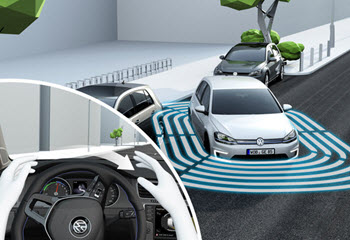Self-parking cars are cars that park themselves. This technology has come at a time when many developed countries find it difficult to provide adequate parking for their commuters. Parking in a small space, especially if you have a slight phobia of parallel parking, will cause you to have major or minor mishaps, such as scratched fenders and bumpers, as well as some very irate people you have offended by damaging their vehicle. Your insurance premiums will go up, and you have to pay the cost of repairs to your car as well as repairs to the vehicles you have damaged.
How do Self-Parking Cars Work
Although the technology indicates cars as being able to self-park, the reality is there still needs to be some input by the driver to facilitate this act. The program in the system is the same as any person executing a parallel parking manoeuvre and it is done with more skill and precision. The car is fitted with sensors along the sides and rear as well as a viewing screen on the front display of the dashboard. There are also audible signals that are emitted so the driver knows what to do while the car is making the parallel manoeuvre.
 The car is driven alongside the car in front of the space you intend to use to park. The audible signal indicates the driver to stop when the car has been positioned correctly. The driver will put the car in reverse and slowly release the brake; as this is done, hands are taken off the steering wheel. The computer program takes over the parking at this time. Because the steering is a “power steering”, the computer expertly backs the car into the parking space. This is done while the driver is slowly releasing the brake. When the sensors relay the message to the computer that the car is correctly positioned, there is another audible signal which indicates to the driver to put the car in Drive. The car immediately moves forward while moving the wheels to position the car properly into the parallel park position. When the parking is done, another audible signal sounds, which is a pre-recorded voice telling the driver the parking manoeuvre is complete.
The car is driven alongside the car in front of the space you intend to use to park. The audible signal indicates the driver to stop when the car has been positioned correctly. The driver will put the car in reverse and slowly release the brake; as this is done, hands are taken off the steering wheel. The computer program takes over the parking at this time. Because the steering is a “power steering”, the computer expertly backs the car into the parking space. This is done while the driver is slowly releasing the brake. When the sensors relay the message to the computer that the car is correctly positioned, there is another audible signal which indicates to the driver to put the car in Drive. The car immediately moves forward while moving the wheels to position the car properly into the parallel park position. When the parking is done, another audible signal sounds, which is a pre-recorded voice telling the driver the parking manoeuvre is complete.
The History of Self-parking Car Technology
The first car to be manufactured with a self-parking system was the Volkswagen in 1992. The system was able to fully park without a driver present in the car. The computer was mounted in the trunk. The cost of this ingenious system to car purchasers was an additional $3000 at the time. Because of the additional cost, the system was not offered to the public as an option. Japan came on the scene with their Toyota Hybrid Prius, the self-parking car in 2003. In 2006, Britain gave the car purchasing public the option of having the system installed in their Toyota Hybrid Prius cars for just $700. Today, more than 70% of British drivers have the system in their vehicles as they find it quite helpful in parking. The United States has not implemented the self-parking system as yet. Toyota plans to do this, but has not done so to date.